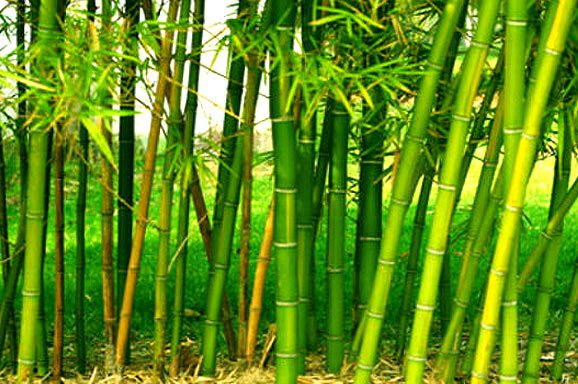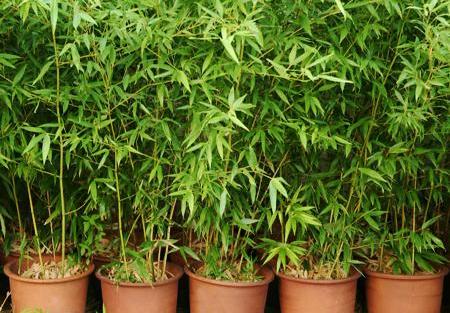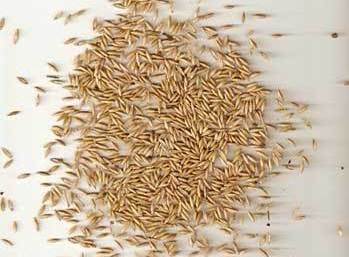Bamboo Farming Guide:

Introduction to Bamboo Farming:- Bamboo is one of the commercially cultivated crops in India and this is considered as a “poor man’s timber”. India is a second largest producer of bamboo next to China in the world. In Asia, bamboo is the most integrated part of the culture and used as wood substitute. Bamboo is mainly used as construction material, furniture, pulp and plywood. India is very fortunate to be blessed with rich bamboo resources. Bamboo shoots are consumed as a food and they are good source of nutrition.
Bamboo Major Production States in India:- North Eastern States of India.
Local Names of Bamboo in India:- Bamboo (English), Banas (Hindi), Veduru (Telugu), Moongil (Tamil), Mulankoombu (Malayalam), Bansberankur (Bengali), Kalkipan (Marathi), Baunsagaja (Oriya), Baans (Urdu & Punjabi).
Commercially Viable Varieties of Bamboo in India:- Even though there are about 136 species exist in India, only some of them are commercially viable. Bambusa nutans, Bambusa balcooa, Bamboosa bambos, Bambusa tulda,Thyrostachys oliverii, Ochlandra travancorica, Schizostachyum dullooa, Melocanna bambusoides, Oxytenanthera stocksii, Bambusa pallida, Bambusa vulgaris, Bambusa polymorpha, Dendrocalamus strictus, Dendrocalamus hamiltonii, Dendrocalamus giganteus and Dendrocalamus brandisii.
Climate Required for Bamboo Farming:- Bamboo plantation grow well in tropical to warm temperate climatic conditions. However, it does not prefer temperatures under 15° C in summer. As the bamboo has shallow roots & luxuriant growth, there should be a provision of protecting from strong winds. Regions with cold winds are not suitable for its growth as the wind kills the tips of bamboo leaves.
Soil Requirement for Bamboo Farming:- Bamboo can be grown in wide range of soils except in rocky soils. Bamboo plantation requires well drained sandy loam to clay loam soils with pH range of 4.5 to 6.0.In India, barak valley region is well suited for bamboo cultivation because of best soil and climatic conditions.
Propagation in Bamboo Farming:- Generally, Bamboos are propagated through culms cuttings or rhizomes. They can also be propagated through seeds. However, bamboo seeds are very rarely available. Bamboo seedlings are raised on nursery beds and they are allowed to grow in poly pots for a year. Then this seedling will be transplanted into the main field. In rhizome planting method, 1 year age culms with roots should be dug and cut to 1 meter height. These culms should be planted in monsoon (rainy season). If bamboos are propagated through rhizomes, extra care should be taken while planting the rhizomes. In most of the places, vegetative propagation method is practiced.

Planting and Spacing in Bamboo Farming:- Usually, bamboo planting is preferred in rainy season. The pits size of 60 X 60 cm should be dug and nursery raised seedlings (1 year old) should be planted at distance of 5meter x 4meter. The density or the number of plants of bamboo accommodated in 1 acre is about 200.
Inter cropping in Bamboo Farming:- In bamboo plantation the gestation period is 5 years. The inter space can be sued during first 3 years for extra income by cultivating inter crops like ginger, chillies and turmeric. Even any shade loving aromatic or medicinal plants can be grown.
Flowering in Bamboo Farming:- Nobody wants to see flowering in bamboo as it happens once in life time and the tree then dies quickly afterwards. In most bamboo species, this may happen after long time, in some species it may not happen at all.

Manures and Fertilizers in Bamboo Farming:- In bamboo cultivation, fertilizers play major role for high yield and best quality. These are important especially when the seedlings are transplanted from nursery to main field. As bamboo plants are heavy feeders, even rich soils would become depleted after couple of years, if fertilizers are not applied. The fertilizers can be added any time during the year. However, it is recommended to apply the fertilizers after harvesting and before irrigating the plants. It is preferred to apply small quantities of fertilizers round the year rather applying in 1 or 2 big doses due to the fact that bamboo rhizomes continue to be growing except in coldest part of the year. Nitrogen and Potassium are major components of fertilizers for which bamboo trees respond very well. Green manures, organic compost, wood ash & chemical fertigation should be applied. To neutralize soil acidic property, lime ( 300 kg to 400 kg of lime per acre) can be applied.
Mulching in Bamboo Farming:- The growth of the weeds controlled by mulching apart from retaining the soil moisture. All transplanted plants should be mulched with 20 cm depth of straw or hay and a diameter of 2 m. To protect from drying the soil, spread the soil on top of mulch.
Irrigation in Bamboo Farming:- In bamboo planting, irrigation should be carried out frequently while they are grown on nursery beds. Immediate irrigation should be given at the time of transplanting seedlings from nursery to main field. As bamboo trees are sensitive to water logging, make sure to drain out the soil in case of heavy rains or flooding. Subsequent irrigations depend on the soil moisture holding and climatic conditions. It’s preferred to let a plant go a little dry and water it. A drip irrigation system can be adopted for better utilization of water. Over watering will make the tips of leaves to turn into brown.
Weed Control in Bamboo Farming:- Hand weeding and hoeing should be carried out for controlling the weeds. Mulching will also control the weeds. As sun light causes for more weed growth, providing shade on the ground and lowering the temperatures can check out the weeds. For appropriate chemical weedicides, contact your local agriculture department.
Pests and Diseases in Bamboo Farming:- Following are the pests and diseases control measures in Bamboo Cultivation. Leaf biting & sucking insects are common pests in young bamboo plantation. Appropriate pesticides should be applied to control these pests. Main diseases found in bamboo plantation are Fusarium moniliforme, var. intermedium, F. equiseti and culms blight. F. moniliforme is the most widespread disease which affects about 24 species of bamboos in Kerala State.Appropriate chemical control measures should be taken care to control these diseases.
Harvesting and Yield of Bamboo:- In bamboo cultivation, the harvesting can be carried out from 5th year onwards. However, in commercial farming, harvesting should be carried out from 6th year. In the first year of harvest i.e. 6th year, 6 culms/clump can be harvested followed by 7 culms in 7th year, 8 culms in 8th year and 9 culms from 9th year onwards. Generally, the 1 or 2 year old culms are left for regeneration. Generally, the annual yield of bamboo depends on the species and as well as environment. An average weight of culms at 10 kg, the yield in the 1st year is about 9.5 to 10 tonnes/acre, which will stabilize at about 14.5 tonnes per acre in 9th year.
Bottom Line of Bamboo Farming:- Excellent returns under well managed plantation. This also provides local employment and support the local economy. There are many financial schemes and government subsidies available for commercial production. Contact nearest or local agriculture department or NABARD for complete information about loan or subsidy.
Interested in commercial Goat and Sheep Farming : Read Here.
Read: Bamboo Project Report Information.
I want to cultivate bamboo in my agriculture land in South Solapur Taluka. dist Solapur Maharashtra, From where I will get the proper help ?
Talk to any professional in local Horticulture/Agriculture Department.
Hello sir we are cultivating arecanut trees, in this land and claimate can we cultivate bamboo trees
I want to start bamboo yarn, any person help me to start the business in outer of Chennai?
Hello, we have planted nilgiri (gum) trees in a large number, and i want to sell it in market.
To whom should i ask for help?
hi i am dr kishor , want to start bamboo farming in ahemadnagar maharashtra region in about 10 acre land. i want good quality bamboo ryzome or tissue culture plant or nursery crop for bamboo plantation ,, can you specify where i get it
thank you
Hello sir, Have u started bamboo farming. I have also got an unused 4 acre land in which I wanted to start bamboo farming. Can u help me.with that
Hi, I want to cultivate about 200 bamboo plants in my land at Village. Allapalli , Dist. Gadchiroli , Vidarbha region , Maharashtra, in this rainy season, who will provide the guidance, any Govt subsidy’s?
I want to start Bamboo Farming in Haridwar Please guide how can I start & how much fund need.
Please help.
Do mr Ajit thakur..send culms or plant by parcel let me know.. please.
Need to plant bamboo as a compound fencing for almost a 1 acre land in Thane district Maharashtra .Need guidance for
1) When to harvest ( Season)
2) which is the species is good in our climate ( Humid )
3) From where I will get the nursery culms
4) What is distance to be kept in two plants.
5) size of digging( depth) for each plant
Request advise
We are interested in planting bamboo, need plantation guidence, about planting distance and water requirements and irrigation methods
Hi,
I want to start bamboo farming in Dholpur district, Rajasthan. Need plantation guidance & irrigation methods, water requirements. Thanks
Hello, i want to start bamboo plantation in the area of 5acres plot, situated in kutch. Is it suitable in thag region? Please suggest?
I want to plant bamboo plants as living fence for my Land. Please guide
In a land which is being used for cultivation of paddy, can we grow bamboo trees along the border of the land.
I m from Punjab. Now l can start bamboo farm
I want bamboo in large quantity with or without land.